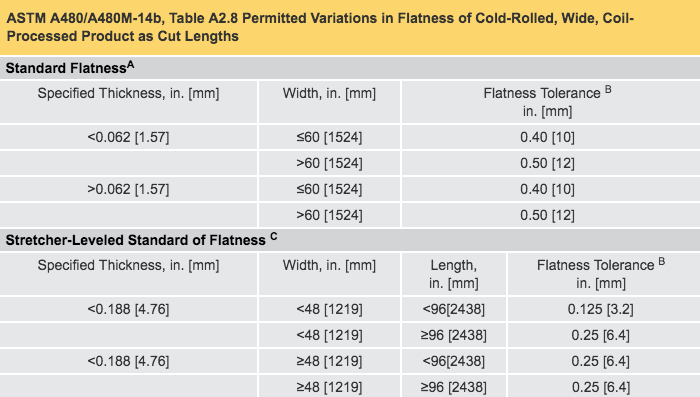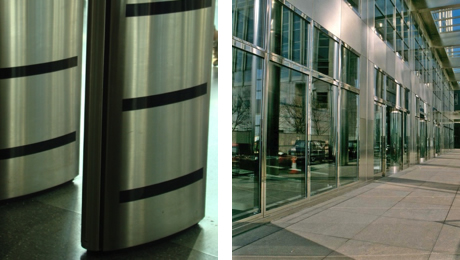Coined finishes, such as Linen and Cambric, are particularly popular for building exteriors because their surface texture diffuses light. With coining, a coil or sheet is passed between two rolls where one is flat and the other is patterned. The shallow repetitive pattern appears flatter than more reflective finishes. Learn more about Finishes on IMOA’s website.
If the material is not flat before a polished finish is applied, then the polishing belt contact with the surface may not be uniform, producing an uneven finish with scratch length and depth variations. Even if the panel is subsequently flattened, finish variation can make the panel appear wavy.
Residual Stresses
All metal coils or panels can have residual stresses, which vary across their widths and thicknesses. Often the outer edges and surfaces are under tension while the center is under compression so material must be removed evenly, otherwise flatness problems can be created during finishing and fabrication. While some fabricators have presses to flatten panels as the final processing step, this may not be 100% effective.
When possible the design should use a standard width and the full panel cross section. If a wider panel is purchased and excess metal is slit from one side, residual stress differences (i.e. removing tension from one edge) can cause panel movement. If the panel is too wide, it is better to slit an equal amount of metal from both sides. Finishing only one side of a light gauge panel can cause panels to curve. Both sides should be finished, but the back of the panel can simply be ground to equalize the stresses and retain a flat panel. Any metal finishing or fabrication operation should consider residual stress balance.
One common method for avoiding edge wrinkling and buckling during brake forming is to cut a notch or groove along the back of the bend before forming. That eliminates the excess metal at the bend, which can wrinkle, and concentrate the stress along the bend.
For more information, see IMOA’s guidance on fabrication of Austenitic and Duplex stainless steel.
Looking for Clues
As you try to determine the cause of flatness problems, consider these questions:
- Place a straight edge across the surface (vertically, horizontally and at 45 degree angles). Is there physical variation in flatness and what pattern does it follow?
- Review the specification, project document, metal purchaser’s requirements, and the mill certifications. Were the correct specifications used and was the material certified to them?
- Is the finish consistent in appearance? Use a magnifying glass if necessary.
- Was there a manufacturing operation that might have changed the residual stress balance?
- If there are bends, are they consistent in appearance?
- How do the purchased and design widths compare?
- Was bending or some other operation that might have changed the stress balance concentrated on one side or area?


